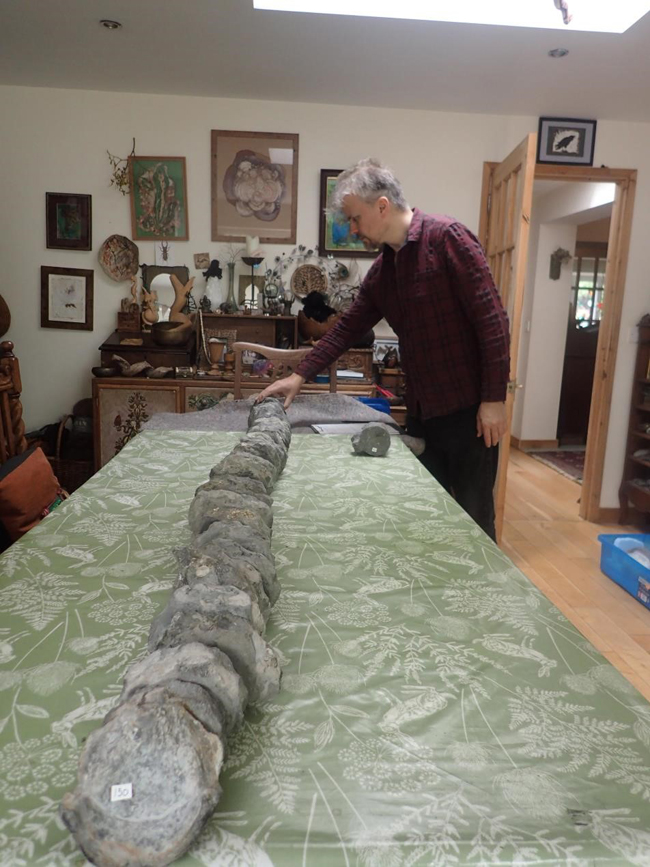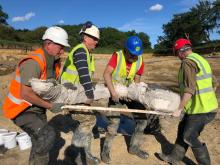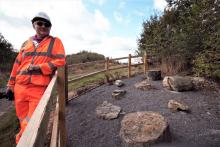
Pliosaurs were marine reptiles, not dinosaurs. They were the top predators of the seas, and the specimen found would have been a creature over 8 metres long and 4 metres wide. According to modern experts, Pliosaurs dominated the seas for around 75 million years, had an enormously powerful bite, a complex system of sensory organs in their snouts, great eyesight and the ability to taste water as they swam to locate prey. No wonder they were on top of the food chain!
Various parts of this creature have been found among clay and limestone, including 29 vertebrae, a tooth, 14 ribs, humerus (bone of the upper forelimb) and some of the small bones that were at the tip of the upper jaw, premaxilla. Many of these pieces are being cleaned and preserved for display.
“Although the specimen is not complete, it tells a fascinating story of how the carcase was broken down by scavenging and decay in the ancient Kimmeridge Clay seas. Because top predators are much less common than their prey, this is indeed a rare find. We have hundreds of specimens of other marine reptiles but only a handful of Pliosaurs,” comments Richard Forrest, one of the country’s leading experts on Pliosaurs.
The Stamford and District Geological Society, led by Darren Withers, discovered the finds and involved excavation over a six-month period.
The remains form part of a current temporary display in North Lincolnshire Museum in Scunthorpe, with a permanent exhibition being installed later in the year. The museum’s collection houses a number of specimens of other marine reptiles, but as top predators are much less common than their prey, there is only a handful of Pliosaurs that have been unearthed around the world.
Councillor Elaine Marper, cabinet member responsible for North Lincolnshire Museum, said: “We are over the moon to be able to have this prehistoric sea monster on display at North Lincolnshire Museum. This is a rare find, and to have the fossilised remains stay in North Lincolnshire and go on display for the public is a real feat. Thank you to CEMEX for making this possible.
“We are really excited for everyone to see the Pliosaur. It’s not every day you get to see remains of a creature that lived around 75 million years ago.”









